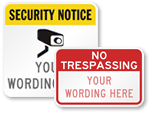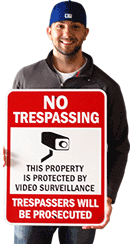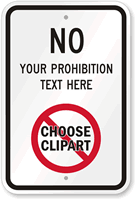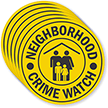Chicago’s Ukrainian Village Neighborhood Watch uses social media to engage neighbors, stop crime
Steve Niketopoulos is a good neighbor. Since he founded the Ukrainian Village Neighborhood Watch group in Chicago in 2011, he has encouraged 7,000 other neighbors to actively watch out for crime in their communities and has even helped thwart some crimes himself. Thanks to Steve’s efforts, watch groups now exist in Wicker Park, East Humboldt Park, Noble Square, Logan Square and Bucktown—and the list is growing. He has been working with local politicians to expand his neighborhood watch strategy to all Chicago neighborhoods, and to that end, has registered for nonprofit status with the name Stay Safe. In the meantime, Steve continues to spend four to five hours a day moderating discussions on the Facebook page, updating the @UKVillageWatch Twitter account and staying up to date on neighborhood happenings. When not working to improve the safety of Chicago communities, he works in TV production.
MySecuritySign talked to Steve about the tools he uses to engage the community and cut down on crime.
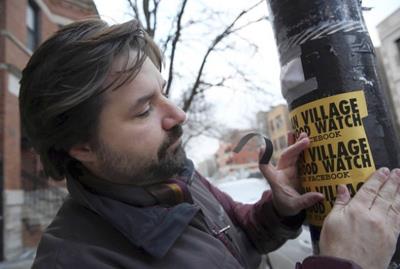
Steve Niketopoulos posts a flyer advertising the Ukrainian Village Neighborhood Watch. Photo credit: Nancy Stone, The Chicago Tribune.
How did the Ukrainian Village Neighborhood Watch start?
I had moved into a neighborhood that was new to me in Chicago, Ukrainian Village, and I had moved from a neighborhood that was a lot easier to meet your neighbors in. Ukrainian Village has a lot of bars over the windows and gates that lock so it was really hard to get to know some of the neighbors, and when I did finally meet some neighbors I kept hearing stories about their apartments getting broken into over and over again. I figured it’s going to be hard to get to know neighbors on the street in the kind of classic way of meeting people, so I tried to figure out a way to use social media, assuming that a lot of people were online. It just really spread over the last couple of years and in the Ukrainian Village forum we now have 1,900 neighbors involved. It’s gotten very real-time savvy and interesting, and it’s gotten the attention of all the local politicians and police officers. It’s really worked, but it was very simple in the beginning.
What challenges did you face in initially organizing the Watch?
Nothing like this had been done in Chicago before so I had to get the awareness out there. I was putting up a lot of signs, and the challenges were time management mostly because not only is it putting up signs all over the neighborhood, but then it’s moderating and building a discussion forum. And this is all voluntary. There’s no money to be made from this. This is just safety awareness, volunteer coordination. But, the challenges were not only that, but then also finding out what the Chicago police department was trying to educate people on and what the crime trends were for the neighborhood.
Describe your relationship with Chicago police.
In all the groups I’ve worked with I’ve probably talked to about 10 to 12 aldermen. Some really love the idea. They love the discussion forums, because once it started to get going and people were talking, then there needed to be a second type of group created that was just focused on community building. So, on one hand, we have the neighborhood watch, which focuses on crime trends and advice and, you know, real-time kind of things. The community building stuff is people recommending somebody for a babysitter or talking about a new restaurant. Some of the aldermen love it. Some of the aldermen don’t like all the open conversation so it definitely goes back and forth when it comes to the political reaction.
What exactly don’t they like about it?
Social media moves so quickly, so if something happens on a street corner and people start talking about it, within 10 or 15 minutes you can have a 20- to 30-comment-deep discussion thread on everybody’s point of view on what they saw. Sometimes, with the police department, they prefer that they’re the ones that people are asking questions to. Some don’t have the staff time or the availability to speed up what they do to match the speed of social media. The Chicago Police Department [has its] own community program called CAPS [Chicago Alternative Policing System]. The CAPS program is not really an online oriented program. They want people to go to bi-monthly meetings where they can get updates on crime trends. So it was a bit touch and go in the beginning, but now I have a relationship with CAPS where they have community representatives in the groups reminding people of basic advice.
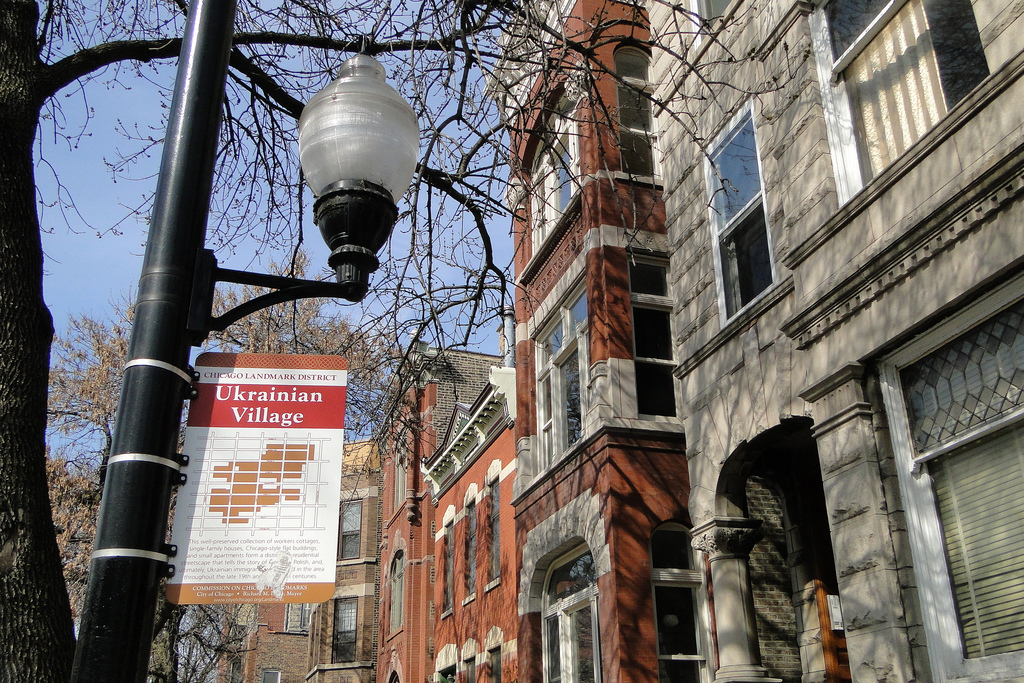
Ukrainian Village in Chicago, Illinois. From Adam Jones, Ph.D.
How much of what the group does is online?
Ukrainian Village has got a lot going for it in the sense that there already are a lot of community meetings, so most of what I do is online because that’s the everyday, every hour kind of thing. So what I like to do is try to get everybody familiar with each other online because people can more easily participate. And you find that it’s about 50 percent of the people that work with the group do it through mobile devices. But that said, people want to meet me and I want to meet people and there are definitely people who are not online at all that I want to meet, so I usually try to do a meet up of some kind every month or every two months. And lately, instead of having a meeting where I’m standing and people are listening to me, I prefer to have everybody show up for a positive loiter event. That way everybody’s contributing at the same time and just talking to each other.
Can you describe for us what a positive loiter event is?
There’s a few different strategies. Let’s assume that there’s a neighborhood with a lot of gang problems, and there’s specifically an intersection where there were gang shootings in the last week. Well all those neighbors are really concerned so what they can do is call the police department and let them know that they’re going to do a positive loiter. So instead of people hanging out on the street corner to intimidate nice people walking by, which is kind of like the classic loitering problem, a positive loiter brings all the neighbors out, which not only gives everybody a chance to meet each other but it also shows to anybody driving by or walking by that the community cares about their neighborhood. It’s a way of putting a face on the people who don’t want to see ongoing violence on their street.
[With my events] I’ll ask the group, “What intersection would you like to do the next one at?” We pick an intersection, we pick a date, and we work with the CAPS department, the alderman’s office and whichever community organization is in that area and just get the awareness out there. Usually we have about anywhere between 30 and 50 people show up, and I pick a two to three hour range for people to come by. They’ll usually bring their dogs over or sometimes they’ll come over with their kids. To be honest, it’s really like a “meet your neighbor” event more than it is everybody staring down the alleys with walkie-talkies trying to find burglars or anything.
How have you seen crime in your neighborhood evolve over the past couple of years?
In the summer of 2011 when I started this thing, there were five to six burglaries per week in the neighborhood. Now we’re down to about two and a half to three per week. So that’s been a real success because now we’re constantly building this awareness. Like if you see this kind of thing, call 911. If you see this kind of thing, that means somebody’s trying something. But it doesn’t have anything to do with taking the law into your own hands. It’s just being vigilant, being observant, making sure you report everything. Oftentimes what happens is people will see something and call 911 and then go to their computer to let the neighbors know, and then everybody over there kind of takes a look out their window. There have been some great arrests in the last couple years where they would catch somebody and all of a sudden burglaries dropped by 20 percent within a month or something.
We had about one and a half street robberies per week in 2011 and we’re down to about .9 street robberies per week now, and that’s about making sure that you remind people to turn their porch lights on so you have more street lighting, trying to block off the gangways between houses because oftentimes somebody gets robbed on a sidewalk and the person will take off between a couple of houses into an alley and then they could meander through another gangway. The police can’t chase people when there’s a maze of alleys and gangways. We try to remind people how to keep their block safe. This year we switched everything to a much more block by block strategy of having everybody evaluate their block and try to figure out what can be done. We’ve definitely made a dent. It’s been really good.
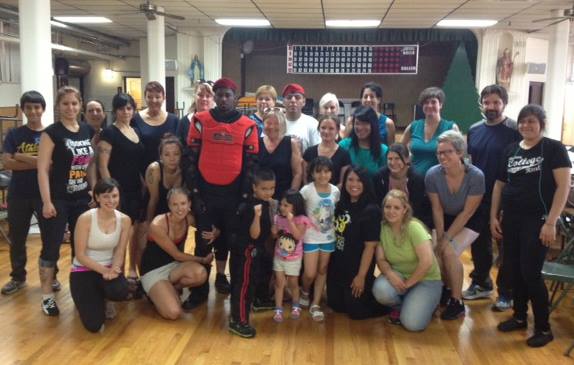
Steve works with others to encourage neighborhood safety and security. Here, he attends a Guardian Angels safety seminar. Photo credit: Miguel Fuentes.
What are some of the things people can do to prevent burglaries?
Every now and then, the police department here will have a public forum where you can go and they’ll have convicted burglars come up in front an audience and talk about what they would look for and why they would pick one house versus another. An interesting thread through the whole thing is that every one of them talks about how if they go to a neighborhood and there’s people that are hanging out on their porch, or they go to a neighborhood where they feel like people are looking out their windows, they’ll move on and go to a different neighborhood. So I think the first step is to be a neighborhood that encourages people to be outside or to meet each other to hang out outside because right there that shows that people are active. Aside from that, you definitely want to make sure that you don’t leave your windows open. We had somebody who got burglarized last week because they went to take a shower and forgot that one of their windows was open. Somebody snuck up in their gangway, cut open their screen and ran into their house, grabbed their laptop and ran out.
Oftentimes burglars will only try to do something for about five minutes—that’s their window. Additional deterrents would be any kind of a noise, alarm system. Most people think that if they get a big dog it’ll solve everything, but I’ve heard many stories about burglars just putting a bunch of peanut butter on a piece of bread and throwing it inside, and the dog always loves that, so there’s ways around it. Video surveillance is sometimes a big deterrent. They talk about how it’s easy to take one of the camera’s that’s pointing somewhere and just push up on it with a broom or something and move it in the wrong direction, whereas you can’t really mess with the dome .
What tips do you have for people trying to start neighborhood watches in their own communities?
Every community is different. It’s about knowing [how] to get to know your neighbors. Is it an easy neighborhood to walk up and meet people or knock on doors? Or is it a neighborhood that might be easier for social media coordination? Is the first step getting involved with the police department or potentially getting involved in the local community organization? Research what organizations already exist and then see if they’re doing something similar, and if not, seeing if they’re easy to work with because sometimes neighborhood organizations aren’t really that easy to work with, but if you can find some allies, that can help you get started. But the thing is to find a way to reach everybody or to reach as many people as possible, and after that, word of mouth will get around. There’s ways to do this with putting no money into it, but it might involve putting up flyers, knocking on doors, going to places where you could meet your neighbors, like a neighborhood group meeting or something of that nature.
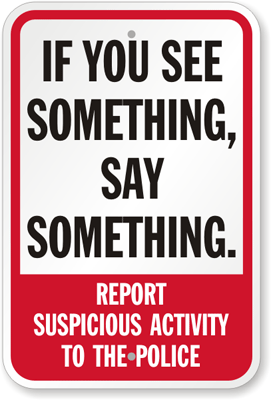
The goal of the Ukrainian Village Neighborhood Watch and others is to teach neighbors how to spot crime and when to report it to police. Available at MySecuritySign.
What has been your most memorable Watch experience?
Early on, I was riding my bike around the neighborhood and I saw exactly the kind of thing that the police told me to look for: a guy walking the wrong way down a one-way street, pulling on car doors. And all of a sudden a car door opens and he gets in and hides between the seats. So I pulled up around the other side and saw that he was starting to mess with the glove box. Now, I don’t want to get too involved, so I pulled away a little bit and I called 911, and thankfully within about five minutes a squad car rolled up and I literally pointed out what car the person was in. The police pull him off to the side, they opened up his backpack and he had four car stereos in there, three iPods, like a bunch of different types of cell phones. It turned out that this guy was tied to a potential 10 to 12 car break-ins. He was just a career car break-in criminal. It kind of woke me up and I said, holy cow, that’s just me calling the police after knowing what to look for. If only more people in the neighborhood, instead of keeping their heads down, would just look around as they walk home, they might just see another one of these kinds of guys.
Is there anything else you think people should know about your group?
If they’re interested in me giving them the blueprint on how to do this I am happy to give it away. This is something I’m doing just for the betterment of neighborhoods, so if anybody wants a basic blueprint I’m happy to work with them wherever they are.
Category: Neighborhood Watch


